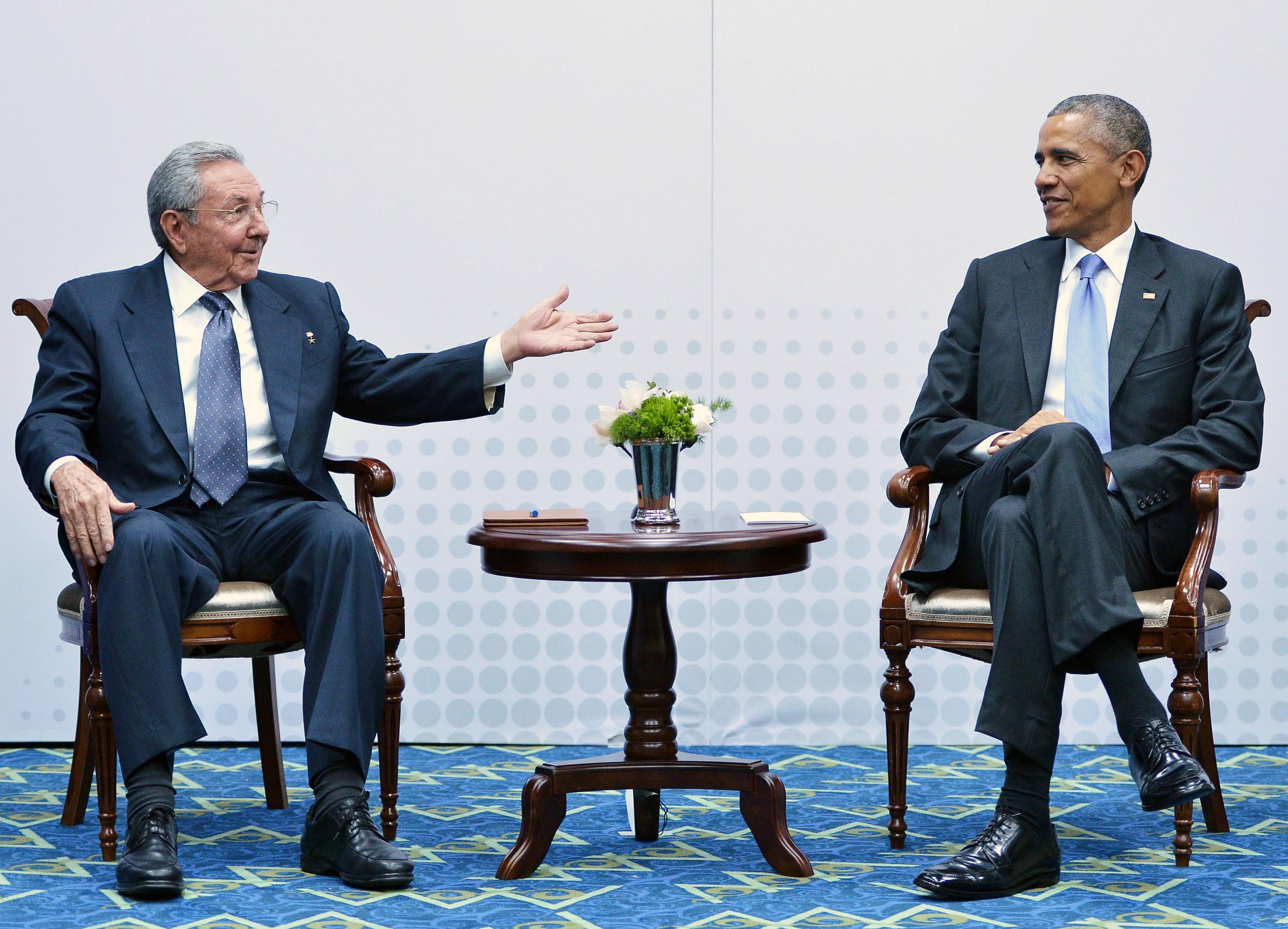The U.S. and Cuba began a fourth round of talks today aimed at restoring diplomatic relations between the two countries and reopening embassies in each other’s capitals. Some sticking points remain: The U.S. wants its diplomats to be able to travel freely in and out of Havana while the Cuban government is suspicious of their intentions, accusing the U.S. of recruiting spies. But these concerns seem surmountable.
President Obama has already gone further toward normalizing relations with Cuba than any president since Dwight Eisenhower broke off diplomatic ties with the Castros’ regime in 1961. But the question now is just how much further he can go in the time he has left, and how many of the changes he makes will be permanent.
Obama has taken Cuba off the state sponsors of terrorism list—a major political impediment to restoring ties. He has also effectively ended the ban on travel to the island. Yes, tourism is still banned, but 12 types of travel are permitted, including a few that could serve as a fairly easy pretext for some sightseeing—and you can even pay with your MasterCard. There are still no direct flights to Cuba, though they will likely be coming in a few months, but there are an increasing number of charter services and soon a ferry from Florida. It’s now also much easier to send money to Cuban citizens and invest in Cuban companies.
That’s a lot—and Congress hasn’t approved any of it. If the negotiations with Havana succeed in getting the embassies reopened, it will probably be about all the president can do through executive action alone. The embargo has been U.S. law since 1996, and Obama can’t restore trade or fully lift travel restrictions without help from Congress. The brand new embassy might not even have an ambassador, as that would require a Senate confirmation. (This wouldn’t actually be that unusual: At one point last year there were more than 30 countries without U.S. ambassadors thanks to congressional gridlock.)
And when Obama’s gone? Depends who his successor is. Cuban American presidential candidates Marco Rubio and Ted Cruz are both opposed to lifting travel restrictions. Floridian Jeb Bush is also opposed to Obama’s Cuba moves and was calling for even tougher sanctions before them. So if normalization is accomplished solely through executive action, it’s conceivable that it could also be undone by it.
This has happened before. In 1977, Jimmy Carter’s administration lifted most of the travel ban, but it was put back in place in 1982 by Ronald Reagan along with tougher trade sanctions. Some have argued that Obama’s changes will be harder to undo, since U.S. companies are chomping at the bit to do business in Cuba and a growing number of Americans, including most younger Cuban Americans, favor lifting the embargo.
If Congress agrees to lift the embargo, it will likely stand no matter who is president. But if Obama’s presidency ends with just reversible moves, that’s another story. Hillary Clinton would certainly leave these policies in place, and a less committed Republican might also, given how public opinion is moving on this issue. But Bush, Cruz, and Rubio are staunch Cuba hawks, and if one of them is elected, the “thaw” in relations might get quite frosty again.
